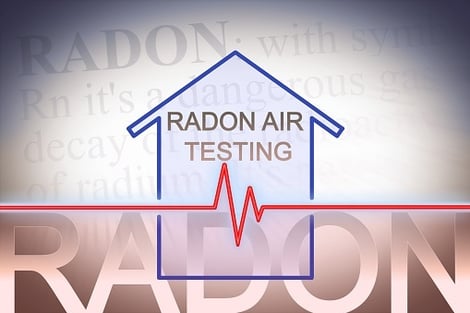What you should know about Radon in the Winter
For us Ohioans winter is quickly approaching, and for most of us, we have probably already bolted up our homes and turned on the heat. With our homes sealed and the heat on, there is not much air flow from outdoors to indoors. So what does this mean?

If your home tested below the EPA action level for Radon Gas in the spring, summer or fall, it may not be the case during the winter months. Depending upon how close your home tested to the EPA action level 4.0 piC/L, could mean you're now living in a home with dangerous levels of cancer causing gas.
It is very possible for radon levels to fluctuate from season to season, with the highest levels typically occurring during the winter moths. There are a few reasons why radon levels can increase during the winter.
Radon is a threat every season of the year. Read our blog post: "What Every Homeowner Should Know About Radon Gas?"Table of Contents
Sealed Homes
Many people will open windows during the warmer months to let the fresh air in, especially during the spring and summer nights. Even if our window are not constantly open, many people will have them open on and off as apposed to the winter months when homes are sealed completely to keep the bitter cold at bay.
When your windows and doors are sealed throughout the winter, the radon in your home becomes trapped with no way to escape, increasing concentration levels inside the home. During the winter many people spend more time at home and inside due to the bad weather not realizing that the concentration levels of radon in their home could be potentially deadly.
Snow Barrier
Residents of Ohio are no strangers to snow in the winter, in fact, we are often berried in snow for months at a time. The snow will act as a barrier trapping radon inside the home. Since radon gas comes from soil and rock underneath the foundation of your home, once the radon enters through cracks and openings in the foundation, it won't be able to escape because of the layer of snow and ice on the soil.
Sack/Chimney Effect
Most of you probably know that warm air rises because it becomes less dense as it the air heats up. When you have your heater turned on during the winter, the hot air will escape through the top of your home, pulling more air to equalize the pressure. This air can come from the soil beneath your home, coming through the foundation, sump pump pit, or plumbing pipes. This can unfortunately bring more radon gas into the home with that air.
Test your home for Radon Gas in the Winter
If you have never had your home tested for radon gas during the winter months, now is the time. Just because your home tested below the recommended action level during the warm summer months does not mean it will test the same during the winter.

Since radon levels are known to fluctuate, it's in your best interest to have your home tested in the winter, when your home is sealed.
Let's face it, in Ohio, we have our homes sealed for the majority of the year. Even when it's supposed to be "spring", we are often plagued with cold weather far longer than we are supposed to be.
This means the radon levels in your home could potentially be above the action level for the majority of the year.
If your home tests low during the winter, more than likely it will test low during the summer as well, and you can rest assured that your home is safe.
At Radon Eliminator we offer Discounted Radon Testing. We will send a specialist to your home to set up a radon continuous monitoring system to test the levels of radon gas in your home.
After 48 hours of testing, the specialist will be able to let you know if your home is contaminated. Once you know the concentration levels of radon gas in your home you will know if it's time to take action and eliminate the gas, or if you can rest at ease for the entirety of the winter.
For a discounted radon test for your Ohio home, click on the link below to speak with one of our Licensed Radon Testing Professionals at Radon Eliminator today.
Considering testing for radon yourself? Read our blog post: "Are Home Radon Tests Accurate?"





